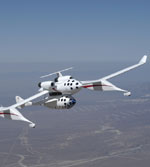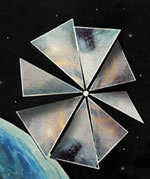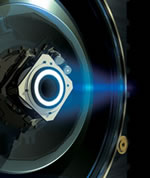NASA’s Orbital Space Plane program reached an important milestone this week with the completion of its Level 1 requirements review. The review evaluated designs from several contractors for a spacecraft which will provide crew rescue and transfer of personnel to and from the International Space Station. This review was to ensure the proposed vehicles are safe, reliable, affordable, and can be maintained. The review team has also put forth their Level 2 requirements, which are much detailed and describe many features that the proposed designs must include.
NASA’s Orbital Space Plane program has successfully completed its Systems Requirements Review to evaluate the concept design of the nation?s next space vehicle ? aimed at providing crew rescue and transfer for the International Space Station. In addition, the review set Level II requirements ? guidelines that further narrow the scope of the system design.
NASA’s Orbital Space Plane (OSP) program is one step closer to becoming the nation’s next space vehicle with the successful completion of its Systems Requirements Review. The review evaluated the vehicle’s concept design for providing crew rescue and transfer for the International Space Station.
The NASA-led review evaluated contractor designs based on the primary design criteria, or Level 1 requirements, set by the agency in February. The contractor teams designing the OSP, The Boeing Company, Seal Beach, Calif.; Lockheed Martin, Denver; and a team including Orbital Sciences Corp., Dulles, Va., and Northrop Grumman, El Segundo, Calif., have been working to develop system specifications, including systems analysis, trade studies, and concept feasibility in preparation for the review.
The System Requirements Review includes analysis of requirements and supporting technical documentation to ensure the system is safe, reliable, maintainable and affordable. It is one in a series of reviews that occurs before the Orbital Space Plane system is built.
In addition, the review set Level 2 requirements, guidelines that further narrow the scope and add a level of detail to the system design. The Level 2 requirements address guidelines for safety, launch, emergency-return and crew-transfer missions, mission frequency, on-orbit mission duration, contingency cargo requirements, and docking and interfacing with the Space Station. The requirements also include limits on the gravitational loads on the crew, health monitoring of the crew, communications with the Space Station and mission control on Earth, reliability, system lifetime, and logistics. Each level of requirements provides a narrower parameter for the design of the vehicle system.
“This review is a critical step in making the Orbital Space Plane a reality,” said Dennis Smith, Orbital Space Plane program manager. “These requirements are the instruction manual for designing the entire system that will provide safe, reliable access to and from the International Space Station,” he said.
The Level 2 requirements are contained in a package of technical documents and plans, which include the Orbital Space Plane Systems Requirements Document, the International Space Station Interface Requirements Document, the Orbital Space Plane to Expendable Launch Vehicle Interface Definition Document, and the Orbital Space Plane Human Rating Plan, along with other reference and guidance documentation. An executive summary of the Level 2 requirements is on the OSP Web site. Following review of the documentation for export-control and security issues, the Level 2 documentation also will be available online.
A System Definition Review is scheduled for November 2003. It will include a further, more focused evaluation of the concept design including risk reduction and breakdown of the functional elements of the system based on the Level 2 requirements. The review also will set Level 3 requirements for the Orbital Space Plane system based on evaluation of the program objectives and contractor feedback.
The program is scheduled to issue a request for proposal to the three contractor teams in November 2003. A decision to develop a full-scale vehicle system is expected in 2004.
For the executive summary and other information about the Orbital Space Plane, visit:
Original Source: NASA News Release






